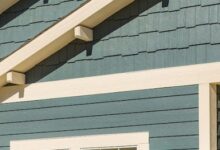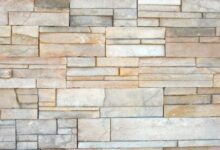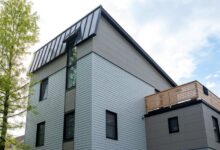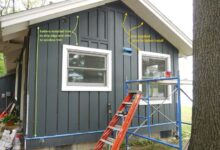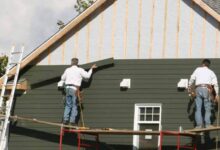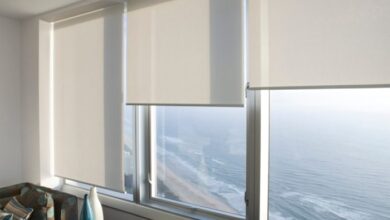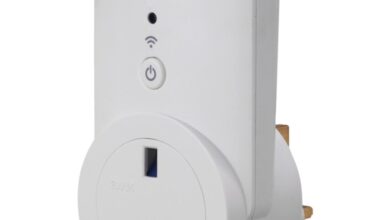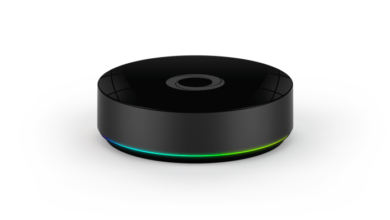Cedar Shake Siding A Complete Guide
Cedar Shake Siding: Imagine a home enveloped in the rustic charm of nature, its exterior whispering tales of enduring elegance. This isn’t just siding; it’s a statement. From its handcrafted origins to its lasting impact on curb appeal, cedar shake siding offers a unique blend of natural beauty and robust performance. This comprehensive guide delves into every facet of this timeless material, exploring its properties, installation, aesthetic possibilities, environmental impact, and cost considerations, equipping you with the knowledge to make an informed decision.
We’ll unravel the manufacturing process, examining the different grades and types available, and comparing their longevity to alternatives like vinyl or fiber cement. We’ll also explore the art of installation, offering practical tips and tricks for a successful project, from surface preparation to tackling common installation hurdles. Beyond the practical, we’ll delve into the aesthetic realm, showcasing how various colors, textures, and patterns can transform your home’s exterior, and how to seamlessly integrate cedar shake siding with diverse architectural styles.
Finally, we’ll address the environmental footprint and long-term cost-effectiveness, ensuring you’re fully equipped to make a choice that aligns with both your budget and your values.
Cedar Shake Siding
Cedar shake siding, a classic choice for homeowners seeking natural beauty and lasting durability, offers a unique blend of rustic charm and modern appeal. Its inherent properties, coupled with careful installation, contribute to its enduring popularity in architectural design. Understanding the material’s characteristics is key to making an informed decision for your home’s exterior.
Cedar Shake Siding Manufacturing
The manufacturing process of cedar shake siding begins with the careful selection of cedar logs, typically Western Red Cedar or Alaskan Yellow Cedar, known for their inherent resistance to rot and insects. These logs are then debarked and processed into rectangular blocks. These blocks are then ripped into thinner pieces, which are further shaped into individual shakes using specialized machinery.
The shakes are then graded, sorted, and finally, often treated with preservatives to enhance their resistance to moisture and pests, although this isn’t always necessary given the inherent qualities of cedar. The entire process emphasizes precision and quality control to ensure the final product meets stringent industry standards.
Cedar Shake Siding Grades and Types
Cedar shake siding comes in various grades, each reflecting different quality levels and aesthetic characteristics. The most common grades include: “Clear,” “Premium,” “Standard,” and “Utility.” “Clear” grade shakes exhibit minimal imperfections and have the most uniform appearance. “Utility” grade, conversely, contains more knots and imperfections, offering a more rustic look. Beyond grade, shakes are also classified by their thickness and length.
Thicker shakes generally offer superior durability and longevity. The choice depends largely on personal preference and budget, with higher grades commanding higher prices. Different types also include tapers, which have a thicker butt end and thinner tip, creating a more natural look, and shingles which are generally thinner and more uniform in thickness.
Durability and Longevity of Cedar Shake Siding
Compared to other siding materials, cedar shake offers a unique balance of durability and aesthetic appeal. While vinyl siding is relatively inexpensive and easy to maintain, its lifespan is considerably shorter than that of cedar shake. Fiber cement siding, though more durable than vinyl, often lacks the natural beauty and texture of cedar. Properly installed and maintained cedar shake siding can last for decades, even exceeding 50 years in many cases.
This longevity, however, requires regular maintenance, including periodic cleaning and treatment to protect against moisture damage and insect infestation. The initial cost is higher than vinyl, but the extended lifespan and reduced long-term maintenance often make it a cost-effective option in the long run. Consider the lifecycle cost when comparing options. Many historic homes still feature cedar shake siding, a testament to its enduring quality.
Natural Variations in Color and Texture
The natural beauty of cedar shake siding lies in its inherent variations in color and texture. No two pieces are exactly alike. Expect to see variations in shades, from light browns to reddish tones, often influenced by the cedar species and its exposure to the elements. The texture also varies, ranging from smooth to slightly rough, adding to the material’s unique character.
These variations, rather than being imperfections, are part of the charm and contribute to the siding’s rustic appeal. Embrace these natural imperfections as they contribute to the authentic look. The color will also naturally weather and age over time, adding to the character of your home.
Cost Comparison of Cedar Shake Siding Grades
| Grade | Thickness (inches) | Cost per Square Foot ($) |
|---|---|---|
| Clear | 5/8 – ¾ | 6-10 |
| Premium | ½ – ⅝ | 4-7 |
| Standard | ⅜ – ½ | 3-5 |
| Utility | ¼ – ⅜ | 2-4 |
Note
Prices are estimates and can vary depending on location, supplier, and thickness.
Cedar Shake Siding Installation and Maintenance
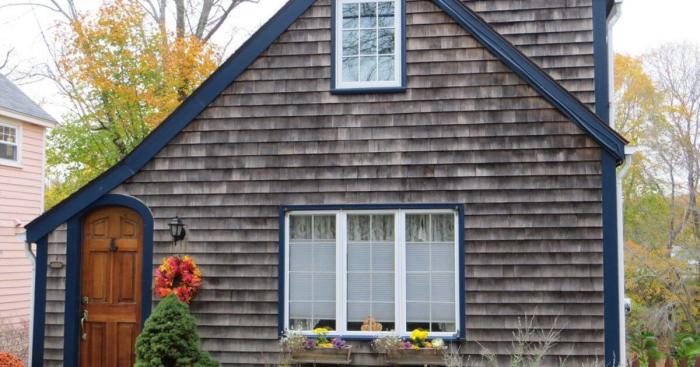
Cedar shake siding offers a timeless, rustic aesthetic, but its longevity depends heavily on proper installation and consistent maintenance. Understanding the process, from initial surface preparation to long-term care, is crucial for maximizing the lifespan and beauty of this natural material. This guide provides a practical, step-by-step approach to ensure your cedar shake siding project is a success.
Tools and Equipment for Cedar Shake Siding Installation
A successful cedar shake siding installation hinges on having the right tools. Improper tools can lead to delays, damage, and ultimately, a subpar finish. Essential tools include a circular saw with a fine-tooth blade for precise cuts, a nail gun for efficient fastening (consider a pneumatic model for larger projects), a measuring tape, a level for ensuring straight lines, a chalk line for marking, safety glasses, work gloves, and a ladder sturdy enough to reach the full height of the wall.
Additionally, a hammer, pry bar, and utility knife will prove invaluable for various tasks throughout the installation. Consider investing in a moisture meter to check the dryness of the shakes before installation to prevent future problems like warping or rotting. Finally, scaffolding might be necessary for taller buildings or projects requiring more extensive reach.
Surface Preparation for Cedar Shake Siding
Before installation begins, meticulous surface preparation is paramount. This step prevents future issues and ensures the siding adheres correctly. Begin by thoroughly cleaning the wall, removing any loose debris, dirt, or old paint. Any damaged areas of the underlying structure should be repaired before proceeding. Ensure the wall is plumb and level, using shims where necessary to create a consistent surface.
A properly prepared surface creates a solid foundation, preventing future problems like sagging or unevenness. For example, if you’re working on an older home, consider inspecting for and addressing any pest infestations before beginning the installation process.
Step-by-Step Cedar Shake Siding Installation
Installing cedar shake siding is a methodical process requiring precision and attention to detail. First, establish a consistent starter course at the bottom of the wall using a level and chalk line. Next, begin installing the shakes, overlapping each course according to the manufacturer’s instructions (typically 1/3 to 1/2 overlap). Use galvanized nails long enough to penetrate the sheathing but not protrude through the shakes.
Maintain consistent spacing between shakes for a uniform look. Stagger the joints to prevent weak points in the siding. As you progress, regularly check your work with a level to maintain straight lines. Remember, careful and precise installation leads to a visually appealing and durable exterior. For instance, a common mistake is using nails that are too short, leading to loose shakes and potential damage.
Cedar Shake Siding Inspection and Maintenance Checklist
Regular inspection and maintenance are crucial for preserving the beauty and integrity of your cedar shake siding. This checklist Artikels key areas to check:
- Inspect for loose or damaged shakes annually, replacing any damaged pieces promptly.
- Check for signs of insect infestation, particularly carpenter ants and termites.
- Examine the siding for signs of rot or water damage.
- Assess the condition of caulking around windows and doors.
- Clean the siding periodically to remove dirt, debris, and algae buildup. A pressure washer can be effective, but use caution to avoid damaging the wood.
Addressing issues promptly prevents minor problems from escalating into major repairs. For example, early detection of insect infestation can save significant costs in the long run. Regular cleaning maintains the siding’s appearance and prevents the buildup of harmful substances.
Common Cedar Shake Siding Installation Problems and Solutions
Several common problems can arise during cedar shake siding installation. Understanding these potential issues and their solutions can save time and prevent costly mistakes. For instance, improper nailing can lead to loose shakes and potential damage. Use the correct length nails and ensure proper penetration. Warped or cupped shakes can result from improper storage or moisture content.
Select shakes with consistent moisture levels and store them correctly before installation. Finally, uneven spacing between shakes can lead to an unsightly appearance. Use a spacing tool to maintain consistency. Addressing these common problems ensures a professional and long-lasting result.
Cedar Shake Siding: Aesthetic Considerations
Cedar shake siding offers a unique blend of rustic charm and sophisticated elegance, significantly impacting a home’s overall aesthetic appeal. Its natural texture and varied color tones provide a depth and warmth unmatched by many other siding materials, creating a visually captivating exterior. The choice of shake style, stain, and color can dramatically alter the home’s character, transforming it from a quaint cottage to a majestic mountain retreat.
Architectural Styles Complementary to Cedar Shake Siding
Cedar shake siding’s versatility allows it to seamlessly integrate with a range of architectural styles. Its natural, organic look complements homes designed in styles emphasizing natural materials and craftsmanship. For example, it’s a perfect match for traditional New England styles, with their emphasis on symmetry and simple lines, enhancing the classic charm. Similarly, rustic designs, such as mountain cabins or craftsman-style homes, find a perfect complement in the texture and warmth of cedar shake.
Even modern homes can benefit from cedar shake, used strategically as an accent wall or to create a striking contrast against sleek, minimalist lines. The key lies in choosing a shake pattern and color that harmonizes with the existing architectural elements.
Curb Appeal Enhancement with Cedar Shake Siding
The impact of cedar shake siding on curb appeal is undeniable. Its natural beauty immediately elevates the visual appeal of a home, creating a welcoming and inviting atmosphere. The varied textures and tones of the shakes add visual interest and depth, preventing the exterior from appearing flat or monotonous. High-quality cedar shake siding, properly installed and maintained, projects an image of quality and enduring value, increasing a property’s perceived worth.
Think of the difference between a plain vinyl-sided house and one clad in rich, dark-stained cedar shakes – the latter instantly commands more attention and evokes a sense of timeless elegance.
Staining and Finishing Options for Cedar Shake Siding
A wide array of staining and finishing options exists for cedar shake siding, each influencing the final aesthetic outcome significantly. Clear finishes allow the natural beauty of the wood grain and color variations to shine through, creating a light, airy feel. Semi-transparent stains offer a balance between showcasing the wood’s texture and adding a subtle hint of color, enhancing the natural tones.
Solid stains provide complete color coverage, allowing for a more dramatic transformation of the home’s exterior. The choice of finish depends on personal preference and the desired level of protection against the elements. For instance, a deep, rich brown stain can create a stately, sophisticated look, while a lighter gray stain can give a more modern, coastal feel.
The durability and longevity of the finish should also be considered, selecting options offering UV protection and resistance to moisture damage.
Cedar Shake Siding Patterns and Designs
The visual impact of cedar shake siding can be further enhanced by employing various patterns and designs. The simplest approach involves using a single, uniform shake size and arrangement, creating a clean and classic look. However, more complex patterns, using varying shake lengths and widths, can add visual texture and interest. For instance, a staggered pattern, where the shakes are offset, creates a more dynamic and less repetitive appearance.
Vertical or horizontal orientation of the shakes can also contribute to the overall design. Vertical installation often emphasizes height, while horizontal installation can make a home appear wider. Combining different patterns and shake sizes can produce striking and unique designs, tailored to individual preferences and the architectural style of the home.
Visual Representation of Cedar Shake Siding Colors and Textures
Imagine a charming Cape Cod style home. The walls are clad in a medium-toned, naturally weathered cedar shake, exhibiting a rich tapestry of browns and grays. The texture is visibly rough-hewn, creating a rustic, yet sophisticated look. The contrasting white trim around the windows and doors accentuates the warmth of the cedar shakes, creating a classic New England aesthetic.
Now, picture the same house, but this time, the cedar shake is stained a deep charcoal gray. The texture remains, but the overall feel is dramatically different – modern, sleek, and subtly dramatic. The gray enhances the clean lines of the architecture, showcasing a contemporary interpretation of the classic style. Finally, envision a mountain cabin, its exterior draped in a lighter, almost silvery gray cedar shake.
The shakes are longer and more irregular, giving a sense of rugged naturalness that perfectly complements the surrounding mountain landscape. This subtle, almost ethereal color enhances the cabin’s integration with its environment, evoking a feeling of peaceful seclusion. Each scenario illustrates how the color and texture of cedar shake siding can profoundly influence the overall aesthetic and feeling of a home, transforming its character to reflect individual style and architectural intent.
Cedar Shake Siding
Cedar shake siding, a classic choice for its rustic charm and enduring appeal, presents a complex environmental profile. Understanding its impact—from harvesting to disposal—is crucial for making informed decisions about sustainable building practices. This section explores the environmental considerations associated with cedar shake siding, comparing its sustainability to alternatives and highlighting practices that minimize its footprint.
Environmental Impact of Cedar Shake Siding Production and Disposal
The production of cedar shake siding involves harvesting cedar trees, milling them into shakes, and treating them with preservatives. Harvesting impacts forest ecosystems, potentially leading to habitat loss and soil erosion if not managed sustainably. Milling processes consume energy and generate waste. Preservatives, while enhancing durability, can introduce chemicals into the environment. Disposal of cedar shake siding often involves landfilling, contributing to waste accumulation and potentially releasing harmful substances over time.
The lifecycle, therefore, necessitates careful consideration of each stage. For instance, a large-scale project using untreated cedar shakes will have a different environmental impact than a smaller project using sustainably sourced and treated shakes. The scale of the project significantly influences the overall environmental footprint.
Sustainability of Cedar Shake Siding Compared to Alternative Materials
Compared to other siding materials, cedar shake offers a unique blend of benefits and drawbacks concerning sustainability. While it’s a natural, renewable resource, its production and transportation still have environmental costs. Alternatives like vinyl siding often boast lower upfront environmental impacts due to mass production and less energy-intensive manufacturing processes. However, vinyl’s longevity and recyclability are significantly lower compared to cedar, which can last for decades and be reused or repurposed in some cases.
The long lifespan of cedar shake can offset some of its initial environmental costs, particularly if sourced from sustainably managed forests. Ultimately, a comprehensive life cycle assessment is necessary for a fair comparison. Consider, for example, a home siding project: vinyl might initially seem greener due to lower manufacturing emissions, but the cedar shake’s longer lifespan and potential for biodegradation after its useful life could make it a more sustainable option in the long run.
Do not overlook explore the latest data about WiFi Smart Plug.
Carbon Footprint Comparison
Precise carbon footprint comparisons between cedar shake siding and other materials are challenging due to variations in production methods, transportation distances, and end-of-life scenarios. However, studies suggest that cedar shake siding generally has a higher embodied carbon footprint than vinyl or fiber cement siding during the manufacturing phase. This is primarily due to the energy required for harvesting, milling, and transportation of the wood.
However, the significantly longer lifespan of cedar shake, often exceeding 50 years, can potentially reduce its overall carbon footprint over its lifetime compared to shorter-lived alternatives that require more frequent replacements. This longevity is a crucial factor that must be considered when evaluating its long-term environmental performance. For instance, a 30-year lifespan vinyl siding needing replacement will have accumulated a significantly higher carbon footprint than a 60-year cedar shake siding over the same period.
Sustainable Forestry Practices, Cedar Shake Siding
Sustainable forestry practices are paramount to minimizing the environmental impact of cedar shake siding production. These practices include selective harvesting, which avoids clear-cutting and preserves forest biodiversity; reforestation efforts, which ensure the continuous growth of cedar trees; and responsible forest management, which promotes healthy forest ecosystems. Certifications such as the Forest Stewardship Council (FSC) label indicate that the cedar used in siding production comes from sustainably managed forests, offering consumers a way to make environmentally conscious choices.
Investing in cedar from FSC-certified sources directly supports responsible forestry and helps reduce the environmental impact associated with cedar shake siding.
Disposal and Recycling of Cedar Shake Siding
Proper disposal and recycling of cedar shake siding are crucial for minimizing its environmental impact at the end of its life. While not widely recyclable in the same way as some other materials, cedar shake can be repurposed for various applications, such as landscaping mulch or firewood. Landfilling should be avoided whenever possible due to the potential for environmental contamination.
Exploring options for reuse or responsible disposal significantly reduces the overall environmental burden of cedar shake siding, promoting a circular economy approach to building materials. For example, instead of discarding old cedar shakes, they can be ground into mulch, reducing landfill waste and providing a valuable soil amendment.
Cedar Shake Siding: Cost and Budgeting
Choosing cedar shake siding for your home is a significant investment that promises both beauty and durability. However, understanding the associated costs is crucial for successful project planning and execution. This section provides a comprehensive overview of the financial aspects of installing cedar shake siding, helping you navigate the budgeting process effectively.
Material Costs
The cost of cedar shake siding itself varies considerably depending on several factors. Grade (premium, standard, or rustic) significantly impacts price, with premium shakes commanding a higher cost due to superior quality and appearance. Thickness also plays a role; thicker shakes generally cost more but offer enhanced durability. The species of cedar (Western Red Cedar is common but others exist) can influence pricing, as can the shake’s length and profile.
Expect to pay anywhere from $4 to $12 per square foot for the shakes themselves, with variations based on these factors. Additional materials, such as underlayment, flashing, nails, and stain, will add to the overall material cost, typically ranging from $1 to $3 per square foot.
Labor Costs
Labor costs are a substantial portion of the total project expense. The complexity of the installation, the size of the house, and the local labor market rates all affect the final cost. Experienced installers are crucial to ensure proper installation and longevity, and their expertise comes at a premium. Expect to pay anywhere from $3 to $8 per square foot for labor, with the higher end reflecting intricate designs or difficult installations.
Factors like accessibility (multiple stories, challenging terrain) can significantly inflate these costs. For example, a two-story home with complex rooflines will naturally cost more to side than a single-story ranch.
Permitting Costs
Securing the necessary building permits is a non-negotiable step. Permit fees vary widely depending on your location and the project’s scope. It’s essential to contact your local building department early in the planning process to understand the specific requirements and associated costs. These fees can range from a few hundred dollars to well over a thousand, depending on the complexity of the project and local regulations.
Sample Budget for a Typical Home
Let’s consider a hypothetical 1500 square foot home. Assuming mid-range material costs of $7 per square foot, labor costs of $5 per square foot, and permitting fees of $500, a rough estimate of the total cost would be:
| Item | Cost per sq ft | Total Cost |
|---|---|---|
| Materials | $7 | $10,500 |
| Labor | $5 | $7,500 |
| Permits | – | $500 |
| Total | – | $18,500 |
This is a simplified estimate, and actual costs can vary significantly. Always obtain multiple bids from reputable contractors.
Long-Term Cost-Effectiveness
Cedar shake siding boasts a long lifespan, often lasting 30 years or more with proper maintenance. While the initial investment is substantial, its longevity can make it cost-effective in the long run compared to materials with shorter lifespans requiring more frequent replacements. For instance, vinyl siding might have a lower upfront cost but may need replacement within 15-20 years, leading to higher overall costs over the long term.
Regular maintenance, including staining and cleaning, is crucial to preserving the cedar’s beauty and extending its life.
Cost-Saving Measures
Careful planning can help mitigate costs.
Several strategies can help reduce expenses:
- Opt for a less expensive grade of cedar shakes if the aesthetic difference is acceptable.
- Consider doing some of the preparatory work yourself, such as removing existing siding, to reduce labor costs. (However, only undertake this if you have the necessary skills and experience.)
- Shop around and compare quotes from multiple contractors to secure the best price.
- Schedule the project during the off-season (typically fall or winter) when contractor rates may be lower.
- Explore financing options to spread out the cost over time.
Outcome Summary
Choosing cedar shake siding is an investment—an investment in both the aesthetic and structural integrity of your home. This guide has armed you with the knowledge to navigate the complexities of selection, installation, and maintenance. Remember, the beauty of cedar shake siding lies not only in its natural allure but also in its potential to enhance your home’s value and reflect your unique style.
From understanding the nuances of different grades and finishes to mastering the installation process and planning for long-term maintenance, you now possess the tools to embark on this rewarding journey with confidence. So, embrace the enduring appeal of cedar shake siding and transform your home into a testament to timeless elegance.
